Tosh Berman's Blog, page 238
February 26, 2014
February 26, 2014
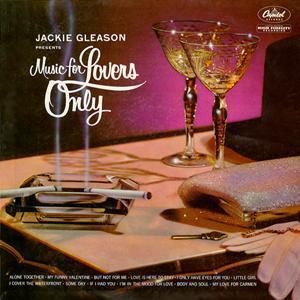
February 26, 2014
There is depression, and then there are actually moments when you are crawling on the floor and clinging to furniture as if it was a lost love adrift in a violent Pacific Ocean storm. Which in a matter of hours that is where I will be, but above the emotional pull of the airplane flying into the Rising Sun. But for now, I am on the floor crying. The one hope, and perhaps my last request is to find the rare Japanese edition of Jackie Gleason and Orchestra’s classic album “Music For Lovers Only. ”
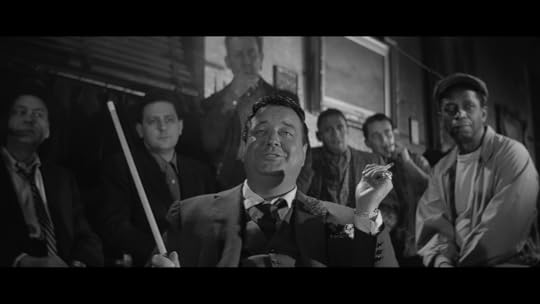
Sadly it is among the albums that were stolen from my home by The Borrowers, and now that I am fleeing from my life here in Los Angeles, the only piece of music I crave is Gleason’s genius use of “mood music.” Which sadly went out of fashion in the 1980’s and 1990’s when country radio stations started to take over the mood music programming. For a short transitory period of time, when I needed to relax I could just put on my favorite radio station KNCT-FM, and gently float to the sounds of Gleason. But one day, instead of beauty, I was surprised by the sound of Johnny Cash. Don’t get me wrong I like cash in the pocket, but not always in my ears, especially when I get in one of my moods.
I’m also a nervous flyer, and the fact that I only listen to vinyl, is a huge problem for me on the plane. Nevertheless I have heard from numerous hardcore vinyl collectors in Tokyo that there are two or three Japanese editions of “Music For Lovers Only” floating around various record shops in Shinjuku. My main mission once I land in Narita is to locate this vinyl before someone else snaps it up. The crisis of living has not previously been more intense in my life.
Published on February 26, 2014 07:42
February 25, 2014
February 25, 2014
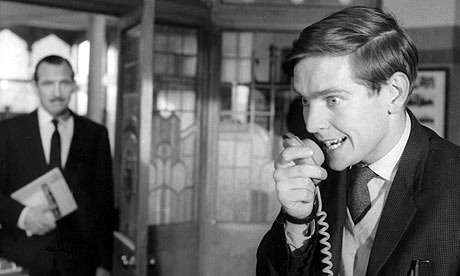
February 25, 2014
Last full day in Los Angeles. Need to pose for photos for my next book. Need to decide what to bring. Close the chapter in my life here, now that I have a life without a turntable or big screen TV. Onward to life on Meguro Dori, and watching the cherry blossoms do their thing, and eventually like the others, become totally obsessed with photographing the moment the cherry colored flowers become ripe and… eventually fall on the pavement and die.

One thing I learned from life is that we can’t all sing like Enrico Caruso. Yet, through my parents, I went to a school that was very much under the influence of Rudolf Steiner. The Waldorf education allowed the student to creatively play instead of forcing one to learn or study. Here I learn the human being consists of body, soul, and spirit. Therefore why not sing like Caruso!

But as a child when I opened my mouth, it came out what some say is noise. As a student I just want to convey to the grown ups that noise is just unorganized sounds looking for a melody. Over a period of years, the people around me disagree with that theory that I obtained from the Steiner school. At this time, I chose to keep my mouth shut, and allow my creativity flow through the pen on paper. As a kid I pretty much admired the works of Karl May, who wrote westerns that took place in the wild west, but in actually was a writer from Germany, and he never been to America. Taking him on as a literary model, sort of made me the Eddie Constantine of literature.
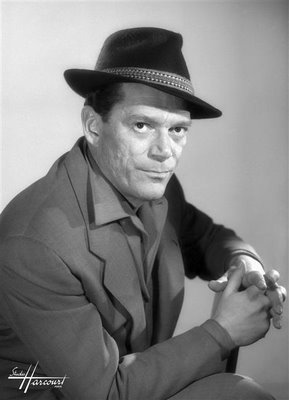
One of the hardest things to do as a writer who doesn’t work for a living is to convince others that I am worthwhile something… maybe important. One of my favorite films is “Billy Liar” starring Tom Courtenay. He plays a northern soul who tells everyone that he’s going to London to make it big, but alas, he fails. It is with this sense of failure that stays in my mind as I leave for Tokyo. I need to finish a manuscript when I am over there, because basically I have nothing else to live for. Right now I’m the cherry blossom that is on the verge of blooming, but if I don’t handle myself properly, I can easily become a dead flower on the ground.
Published on February 25, 2014 08:47
February 24, 2014
February 24, 2014

February 24, 2014
My all time favorite album is Michel Legrand’s “Play For Dancers” which is the U.S. title for “Archi-Cordes.” So when I woke up this morning to do my regular ritual of putting this album on my turntable, I noticed two things. One, my turntable was missing, and two, the album was gone as well. In fact, 1,406 pieces of vinyl were gone, missing, not in front of me, and not in the house. I slowly looked up from the space that was formerly occupied by my record player and I noticed that the Sony wide-screen TV set is as well, now an empty space. I had to sit down as panic slowly crept up from the left arm to my neck and eventually settled in my brain.
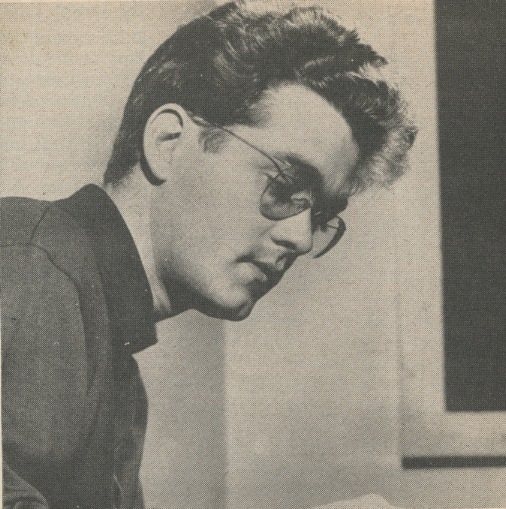
Although a total surprise, I shouldn’t be. As I wrote in a previous journal entry, we have been having trouble with a borrower's issue, where our thoughts were kidnapped and then returned to us. When I walked around the house, I noticed that all the windows were secured and the doors were locked. I immediately felt that an ex-girlfriend who had a key may have came in and took my precious items away. Having my first cup of coffee, I realize that this is not the situation due that my wife has strict rules about me making keys for ex-girlfriends, and two, I really don’t have an ex-girlfriend. This case was getting more troubling to me as the minutes dragged on. Especially when I noticed that the only piece of art that I have in my collection (of one) is missing as well. Richard Hamlton’s painting of Mick Jagger and Robert Fraser being arrested called “Swinging London, 67.” Shit, how much more pain can one take on a Monday morning. The fact that someone (and let’s face it, we have to presume it's the Borrowers at this point and time) took albums, that I think only I can care about. For instance is there anyone out there that would want the entire vinyl catalog from Paul Jones?
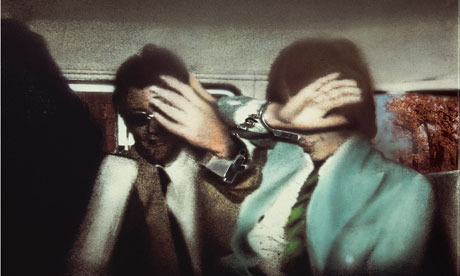
Also over the years, I have been slowly collecting all films and TV appearances from my favorite actor from the late 60’s and early 70’s, Pete Duel, who starred in the TV series “Alias Smith & Jones.” He was born with the name Pete Deuel, but had it changed because he consulted a numerologist who advised him that his original name was unlikely. Nevertheless the troubled actor shot him self and died in the morning of December 31, 1971.
Now, noticing that my old VHS tapes of Duel’s performances on “Alias Smith & Jones” were missing like my record collection, I decided to take stock of my life at this moment. Ever since I left my job one and a half years ago, I have been just focusing on working on my memoir. But it seems that every fifth page of writing, I noticed the amount of money in my bank account would go down as well. The more I spend time writing, the less money comes in. I thought “fuck it, ” I’m moving to Tokyo. My wife and I purchased tickets to leave for Japan on February 26th, hopefully in time to see the cherry blossom trees on Meguro Dori, as well as trying to locate the old Michel Legrand and Paul Jones albums from the local record shops in Shinjuku and Shibuya. It is time to make a fresh start. The one thing I know how that I must keep up on my writing of this journal, and finish off my memoir. After that, I will let fate take over my life.
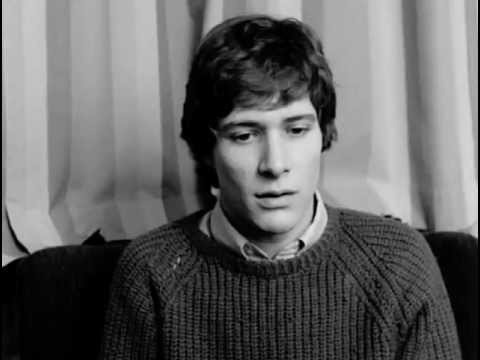
Published on February 24, 2014 10:10
February 23, 2014
February 22, 2014
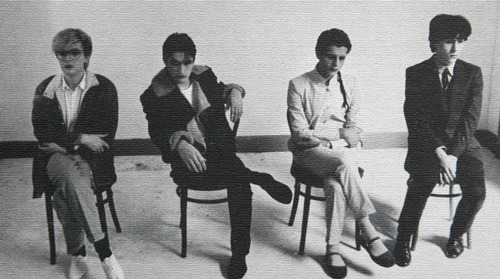
February 22, 2014
Since the early eighties, the presence of David Sylvian, has weighted heavily in my mind and soul, which are not that odd. Of course, my love for Sylvian’s music and image would mean nothing if it wasn’t attached to a memory of a love that didn’t happen. It should have happened, but alas, the stars were not working towards my favor. I pretty much put all of this in the back of my mind, but by chance this morning, I ran across the girl in question and the recent Sylvian album “Died In The Wool.”

Some years ago I was attracted to a girl where everything between us seemed perfect, but she was involved with another, and her affair with the young man was going back and forth. It was as if a tide was hitting the shore, where he came upon her life and then leaves. I would somehow come in-between the waves, but I could never stay long, due that he always was on his way to her home, her heart, and it was totally accepted by her friends that this was her long-suffering boyfriend. The thing that really connects me to her was not her record collection, but the fact the fact that she owned 12” singles of early Japan releases with a few Sylvian recordings. Japan was Sylvian’s first band, and what is interesting about them at the time was that they were not that interesting. When I first heard them, I thought they were a Roxy Music rip-off, and of course, their name… It is common knowledge that all bands that name themselves after cities or countries tend to suck. But after I got over that prejudice, I noticed the textural beauty and tension between Sylvian’s Bryan Ferry like-vocals, and the instrumentation that was full, but spare at the same time. There was surface like oriental sounds to their arrangements, but what makes it all work, was Sylvian’s voice and the slippery fretless bass of Mick Karn and the minimal backing of David’s brother Steve Jansen on drums and keyboardist Richard Barbieri.

Over time I would lose interest in the David Sylvian world, not due to this excellent music-making, but more to the fact that my life was changing and I was adopting new music or thoughts in my world that didn’t have anything to do with my past. This was something that I had in common with Sylvian was his need not to repute the past, but keep going on a forward direction. For the casual listener, the Sylvian catalog sounds not that different, but the fact is in existence is a whole philosophy in the works, with respect how he sees his music. So the thought that he would do material from the Japan days on stage is unthinkable. One does not really know if he is comfortable with his past, due that he was very much set in the pop music world as a teen idol of sorts. He was, or is, regarded as the most beautiful man in British Pop, but I don’t think he had the personality to carry that over to his private life.

His privacy is virtually fortress like, as a fan I rarely know what or where he is. One gets a series of facts, for instance he has two children from a marriage with Ingrid Chavez. But beyond that his life is a mystery to me. The late and great Mick Karn was considered to his equal in Japan, but they had a disagreement, that is customary when one is in a band together. The curious thing is that there are two distinctive sounds in Japan. One is Sylvian’s voice, and the other is the bass playing by Karn. For me, the big difference on a Sylvian solo project is the absence of a bass sound. The music, overall, is not that different, but there is only space there on the solo recordings in replacement for the fretless bass by Karn. So in a sense, Karn is only replaced by silence. This I think is very beautiful.
Not long ago, and by total chance, I ran into the girl, which instantly reminded me of David Sylvian. The one thing that came to mind was she was as exquisite as ever, and she eventually married her boyfriend and now has a family. The funny thing is that our relationship hasn’t really changed, except there is a great deal of silence between us. On the other hand, she asked if I still liked David Sylvian's music, and told me about the “Died In The Wool” album, and said I should get it. We hugged and then she left my world. Later, I purchased the Sylvian album, and even though it didn’t exactly bring me back to the past, it was a voice from yesterday, but talking to me today. Currently I am grateful that she is healthy and seems happy, and I now have a new David Sylvian album to listen to.
Published on February 23, 2014 11:37
February 22, 2014
February 22, 2014
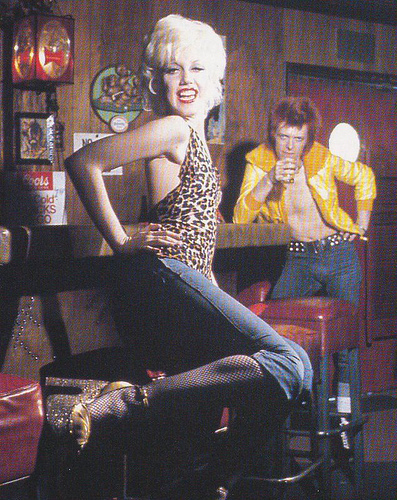
February 22, 2014
“Oh, what’s the bloody point.” I’ve been keeping my journal up for the last 30 something years, and as I re-read passages I realized I haven’t really went forward as a human being. Old age doesn’t really suit me, but neither did my youth or middle-age did anything for me. One thing that has been consistent in my life is basically boiling down to a theory by Arthur Schopenhauer that our world, or I should say “my” world is driven by a continually dissatisfied will, continually seeking satisfaction. My passion for Cyrinda never faltered, and when she left me for David, I thought for sure, my world, will be completely crushed. Instead, I find my pain of losing her to another man as something of a turn-on for me. I never felt more alive, when I am mourning for a lost love.
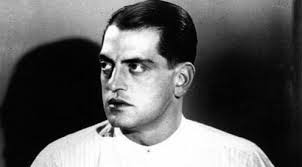
Luis Buñuel’s film “L’Age d’Or pretty much described my romantic sensibilities. At all cost of trying to get the girl, when the girl is not that interested in you anymore. Cyrinda went off with other men, very famous men, and I never failed to watch her from a great distance, or the gossip pages of various magazines. The illness from my passion made me feel like Dwight Frye, when he is found on the ghost ship with Dracula’s casket. I feel my obsession is chaining me to the memory of Cryinda, yet in reality, did even that love exist?

Some years ago, I became obsessed with the relationship between the female writer George Sands and Frédéric Chopin, which started out brilliantly but became a chore for Sands. As Chopin got physically ill, he has been quoted as saying that his doctors have told him that "the first said I was dead; the second said I was dying; and the third said I was about to die.” I too felt illness creeping up on me for the past 30 years, and I wonder if tomorrow will exist for me, once I give up my daily obsession about a lost love, that in reality was not even close to love.
One of the things that keep me going with respect to my journal is my major influence, Jules Renard, who kept his journals from 1887 to 1910. In them, he kept his thoughts and observations on daily life, which for me, was uplifting and fascinating at the same time. One quote from his journal stays in my mind, “Laziness is nothing more than the habit of resting before you get tired.” If only I take that advice literally, I would be a happy man. But also his comment “If one were to build the house of happiness, the largest space would be the waiting room, ” is very truthful as well. And it is perhaps my “love” for Cryinda is placed in that waiting room.
Nonetheless, in the end, I just don’t know. Oh, what’s the bloody point.

Published on February 22, 2014 09:45
February 21, 2014
February 21, 2014

February 21, 2014
My favorite Jacques Demy film is “Model Shop” starring Gary Lockwood and Anouk Aimée, who plays the same character that is in an early Demy film “Lola.” Not long ago, when I found myself in Paris, I purchased the Demy box dvd set. I’m often in my bathtub screaming (not singing) tunes from “The Umbrellas of Cherbourg.” So, by my very nature, this was an indispensable box-set for me to have. I don’t know if Lockwood is my favorite actor, but he is one that I often reflect on. Like million others, I admired Stanley Kubrick’s “2001: A Space Odyssey, ” but oddly enough I find his character in “Model Shop” more distant or foreign like. He appears to be an astronaut who landed in Venice, California.
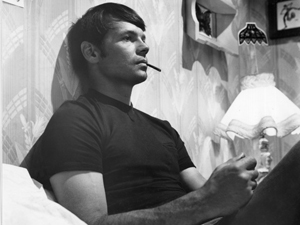
As a child, I went to Venice all the time, and I have these faint images of the oil wells on the beach pumping the tar up from the ground. There was a consistent noise being produced by these giant horse shaped wells, that was creepy, and it seemed it went on for 24 hours, 7 days a week. Watching “Model Shop” where the Lockwood character lived on the beach, Demy captures the sound in all its drama and surrealism. I totally forgot the sound, till I saw the film, and brought back memories of Venice.
One of the things I remember as a child quite visually was a drunk on the street walking down Ocean Front Walk, which is basically on the beach, and seeing him being tormented by a group of kids. Maybe four or five kids in all, but what they do is taking turns in pushing the drunk to the ground. Once he tries to get up, they keep pushing him back to the pavement. What I remember is the sound of the oil wells blended in with the kids taunting the drunk, and his voice pleading for them to stop. Then it got really ugly. One of the children began to throw rocks at him. In a way it was like trapping a small animal, and keeping it contained in a space, as you commit torture on the poor helpless beast.

Ever since then I never wanted to visit Venice, but I had to go with my parents because they had so many friends who lived there. Every moment there my stomach would tie up in knots, and nothing could erase the anxiety till we actually leave the neighborhood. I’m very sensitive to space and location, and if something happens within that specific site, I can never erase it from my mind. So even watching Jacques Demy’s “Model Shop” brings back the violence of that neighborhood. Even though I can’t be totally sure, but it seems that Lockwood’s small Venice house is located on or very close to the public beating I witnessed as a child. By watching the film I become obsessed with the memories, but I know being at a distance and this is only a film, I’m fairly safe from the trauma.
Living in the canyon areas of Los Angeles, we are often have unwelcome insects in our home. The kitchen and bathroom would get a sizable population of ants marching on the counter and for some reason in the bathroom washbasin. On hot days, ants I imagine being thirsty, so I would fill the basin with warm water, and watch them drown. I would often give a few ants a chance to live or get out of the basin, but with perfect timing I would force the ant under the water to see what he or she will do. Once it stops struggling, I feel immediately sad and depressed. It reminded me of the drunk, and now, I also connect the soundtrack to “Model Shop” by the Topanga Canyon band Spirit. To this day, I’m ashamed of my cruelty but very happy to have a dvd copy of Demy’s “Model Shop. ”
Published on February 21, 2014 10:12
February 20, 2014
"The Atrocity Exhibition" by J.G. Ballard
First I have to make clear that this is not the ReSearch annotated edition, but a mass market book from a British publisher Thiad Panther, and issued in 1970. Nevertheless this is a very stimulating book. J.G. Ballard is probably one of the great visionary writers regarding culture as it is now. I want to say he predict what will happen, but I think it was happening when he wrote his series of classic novels, but most of us were not aware of that 'Ballard' world that was and is clearly out there and here and everywhere.
"The Atrocity Exhibition" is a series of very brief narratives that deal with the John F. Kennedy assassination as the ground zero of anxiety, dread and fear. For Americans at the moment, it's 9/11, but for my generation, the Kennedy assassination opened up an inner world of demons, secrets, and disappearing identities on a landscape one couldn't trust being there or being altered in some fashion. I think Ballard is commenting on the role we all play, but especially the powers-to-be, whoever they may be, in planting a world that is not of our choosing, but one that we just have to deal with. Which includes sexual desire when confronting death, shock, and machinery. Ido not know if his novel "Crash" came before or after "The Atrocity Exhibition, but the book does deal with the same issues of the erotic pull of car accidents and iconic personalities. Ballard gets extra points for including Ralph Nader among the celebrities that get maimed or killed by the automobile. Now mostly remembered for his political viewpoints as well as running for President, he at the time of this novel was famous for going after the automobile industry for not making cars more safer with respect to seat belts, etc. What we get here is a college effect of names, who at the time were still alive, being sacrificed to the automobile death culture as well as interesting commentary on the readers obsession with famous people and how they are placed in our world as entertainment, but also masking secret desires that are not fully exposed to the public.
Ballard mixes the agony of death, of losing someone, and how culture eats up the anxiety of the 20th century (and now the 21st...) and spits out in a diseased form, which can be this piece of literature. A great book, whose sister is Burroughs' "Naked Lunch" and a cousin to classic Surrealist painters.
Published on February 20, 2014 11:29
February 20, 2014
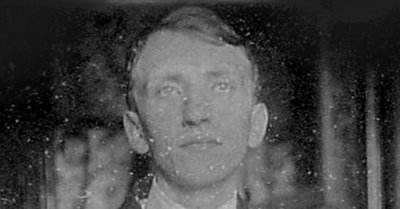
February 20, 2014
People think I am a great reader, but I am actually one of those people who pick up a book and then leave it by the bathtub (I do a lot of reading while taking a bath), especially if its a collection of essays or short stories. Those books take me the longest to finish, due that each piece in the book is sort of complete narrative or thought. Right now I am reading Maurice Blanchot’s “Desperate Clarity” which is a collection of literary reviews he did during the Nazi occupation of France. The most fascinating aspect of the book (so far) is what is not being said, and that silence is so powerful and depressing at the same time. It got me thinking what is not being said, because we are so used to writing that deals directly with an issue, but now and even then, writing is sometimes about everything except that issue.

Another reason why I just have to stop reading this book is because I dropped it in the bathtub. When I go get a bath, I use Japanese bath power which gives the water a nice green visual as well as a smell that conveys the forest of one’s imagination. So as I let that book dry, and myself as well, I go back to bed in the morning to read “The Futurist Manifesto” by F. T. Marinetti, written in 1909 and published in French in the newspaper Le Figaro. My first thought was ‘how crazy that a newspaper would publish something so uncommon as this manifesto. ' Personally, I’m a huge fan of art related manifestos. One of my favorite all-time books (and yes, I haven’t finished that one as well) is “Manifesto: A Century of Isms,” edited by Mary Ann Caws, where one can find “The Futurist Manifesto” in its complete romantic glory.

Marinetti strikes me as a man who is in love with the ideal of man-made world where machinery becomes sort of a God, or maybe not an actual ‘figure’ but the imagination of man (and I am using that gender specifically, because the Italian Futurists were not that hot on Feminism) is alone on a spiritual plane. Some of their basic political ideals are dodgy at best, but one can admire their paintings, poetry, photographs, and I think especially music or sound making. The whole ‘Art of Noise’ aesthetic is something that is still with us, and whenever there is sound, I think that concept is the foundation of our desire to make some music AKA noise. John Cage, was too influenced by The Futurists’ approach to sounds, but he is more of a natural process or liking silence as a form of sound as well. The beautiful photography by Ansel Adams is totally the opposite of Marinetti’s stance against nature, yet it takes a machine, the camera, to photograph what is the ‘ideal’ of nature at its most stunning.

For me personally, the sound of Poison Ivy’s guitar (The Cramps) is the most beautiful sound on the planet. It has roots in “The Art of Noise” but a much warmer sense of chaos and there is a beauty in her performance that is touching as well as sexual and obsessive. The obsession to capture either silence, pure noise, or even structured noise (music) is very appealing to me, in fact I also admire the Japanese composer Toru Takemitsu for being on the tightrope between chaos and beautiful order. Marinetti, I think is essentially looking for order within the spirit of the machine age and politics. A zen liked peace in a horror landscape. With that in thought I go back to the bathtub, with a fresh supply of Japanese bath scent of the forest, and continue reading Blanchot’s “Desperate Clarity. ”

Published on February 20, 2014 10:01
February 19, 2014
February 19, 2014
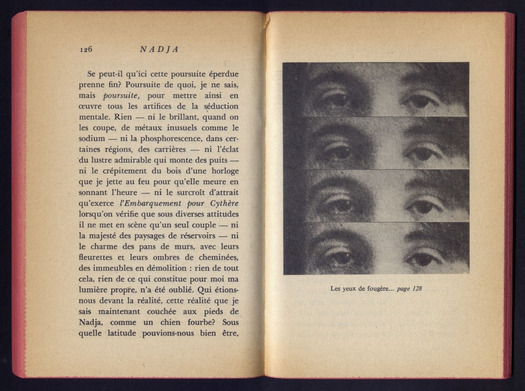
February 19, 2014
The 1928 surrealist novel “Nadja” by Andre Breton is a huge influence on my own writing as well as a lifestyle choice. As a teenager one is dying to join a much bigger gang, yet, I couldn’t find anything that interesting besides music. I was the sole kid in Taft High School who was a fan of Lou Christie. I became obsessed with not only the sound of his records, but like “Nadja” he conveyed ‘another wordless” with his voice. Also I was deeply connected to his songwriting partner, the much older than him, Twyla Herbert, a mystic and classical trained pianist. Life is often thinking about individuals, and then combining them and one sees a natural order of things or a common ground between the individuals.
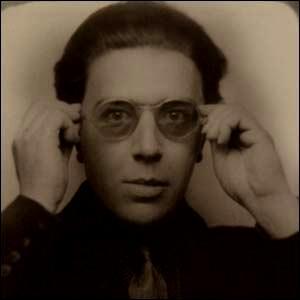
For me, the main quotation from the Breton novel “Don't I love her? When I am near her I am nearer things which are near her. ” very much describes my definition of true love. Nadja is important, but I actually find objects she touched, she wears, and locations that she was at, more enticing and erotic to me. To this day, I am obsessed with women who I find beautiful, their natural surroundings, and why they choose certain objects over other items. For me, it goes from the habitual obsession with a woman’s clothing to the connoisseur aesthetic of what they actually touched.
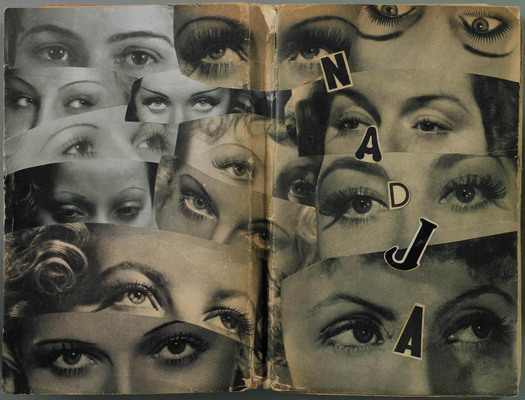
I remember I had my private “Nadja” and I brought her the Breton novel as a gift. I told her to read the book, and if possible, could she bring it back to me. About two months later, we had dinner and she brought the novel back to me. I asked her if I could borrow it, and she, without giving it another thought, said “sure.” When I got back later that night, I went over each page, and imaged her actually touching the book, and perhaps wondering about a specific paragraph or phrase that she found in the novel. She was the type of reader who liked to underline certain passages or quotes as well as writing down someone’s phone number on the title page. I immediately felt the pain of jealousy, wondering whose number she wrote down. I was tempted to make the phone call, but I kept hesitating, because in reality I didn’t want to lose that feeling of jealousy.
One of the lines that she underlined, got to me the most. "He cannot enter, he does not enter.” I had no doubt that the “he” in this sentence was me. I was only wondering if she was commenting on me, or something much larger than that. Perhaps she feels the same way as I do, regarding that love is far more potent when attached to things or locations. The thought that we are having an affair between us through this book made this specific edition of “Nadja” into an erotic object.
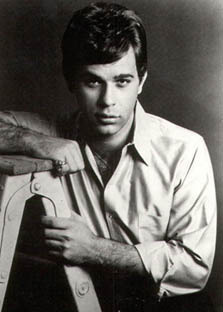
One of my favorite songs by Lou Christie is “Rhapsody In The Rain, ” which he co-wrote with Twyla Herbert. The song is about a teenager’s memory of a sexual experience in the backseat of a car. I was intrigued because it placed a sensual act within the weather (the rain) and an automobile.
Baby, the raindrops play for me/
A lonely rhapsody 'cause on our first date/
We were makin' out in the rain/
And in this car our love went much too far/
It was exciting as thunder/
Tonight I wonder, where you are?
What’s erotic to me is the raindrops and imagine what the car looked like and smelt like that moment that he made love in that automobile. Beyond that, I also want to find out where the car was parked, and I would have loved to go there with my Nadja, and make love to her in that car.
Published on February 19, 2014 10:01
February 18, 2014
"Tokyo On Foot" by Florent Chavouet
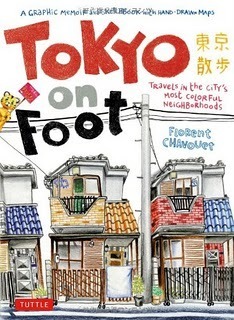
I've been coming back and forth to and from Tokyo for the past 25 years, and it is without a doubt an amazing city on so many levels. It has been said before, but Tokyo is sort of like numerous layers of an onion. Each layer is a unique taste, and I often feel Tokyo is sort of a city with many dimensions - in sort of a Philip K. Dick way of looking at a landscape or even JG Ballard. Also for the past 25 years I have been trying to write a long prose piece about the city, but it never came out good in my opinion. I think my problem is that I am trying to locate a position to write from - and Tokyo is very much like a devilishly tasty ice cream cone. There are so many ways to eat that cone, all of it pleasant, but never the essential all-over experience. After so many years, I am still acquiring new things about the city.
Florent Chavouet, is a French artist/illustrator who stayed in Tokyo for a bit, and this is his visual journal of sorts. He wisely divides the book into different sections of the city, and gives a very subjective, yet I think the popular view of each area of the city. Which means the iconic as well as something personal. There have been a few books I have read by foreigners (either British or American) that strikes me as either just plain wrong or naive at its worst, but here Chavouet goes into each area and just draws various people and buildings, but he adds details either through his illustration or minimal text. It's not a right or wrong approach to the city, but it is own approach and it is highly personal and quirky in a very good way. Also his map drawings are very good. You can use it if you wish to take this book with you. On the other hand it is a large book, so it is not made for a tourist, but perhaps for someone who either lives in Tokyo, and is either a foreigner or a Tokyo-citizen who is curious how a Frenchman looks at his or her's culture.
My favorite little part is when he gets arrested for a stolen bike (he's innocent) and was taken to the local police station. His observations are never mean - spirited, but also quite informative. A wonderful book.

Published on February 18, 2014 15:28



